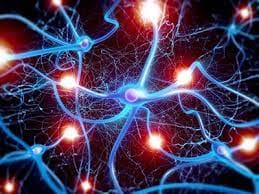Before we get into that, however, let’s talk about the difference between nerve pain and neuropathy. Even though both involve pain in nerves, there is some crossover in symptoms.
Heidi Moawad, MD, explains the difference this way. “Neuralgia [nerve pain] is a type of pain that’s caused by a nerve problem, and neuropathy is a type of nerve damage. There are many causes of neuralgia, including nerve injury, pressure on the nerve and neuropathy.
Neuropathy has many symptoms, including neuralgia, paresthesias (unusual sensations), and diminished sensation. There are many causes of neuropathy such as inflammation, diabetes, chronic alcohol misuse, medications, infections and more.”
With that said, there are benefits of CBD for nerve pain and neuropathy. For purposes of this blog, however, let’s just focus on nerve pain.
What causes nerve pain?
Generally damage or injury to a nerve that delivers pain sensations to your brain, or injury to the brain itself causes nerve pain or neuralgia. Neuralgia can affect any nerve but occurs in some more often than others, including:
- Post-herpetic pain can occur after you’ve had shingles (herpes zoster), affecting the same area as the shingles rash.
- Trigeminal pain causes pain in your jaw or cheek.
- Occipital pain at the base of your skull can spread to the back of your head.
- Pudendal pain occurs in the saddle area between your legs.
What are the benefits of CBD for nerve pain?
Two things that pop into my mind immediately. First, it’s safe and easy to use, isn’t addictive like so many pharmaceutical remedies. Second, it can be used as often as necessary with few, if any, side effects.
CBD, or cannabidiol, is one of many compounds found in the hemp plant. CBD just happens to have a relationship with the endocannabinoid system (ECS) that everyone has. The ECS has CB receptors (CB1 and CB2) that patrol pain pathways in the skin and central and nervous systems. Other places as well, but I’ll just focus on nerves for now. These receptors tell the brain when there is pain. The ECS is the hub that keeps our bodies in balance, maintaining homeostasis. When the need arises, it sends more receptors to the area to try to restore harmony. But that doesn’t always work. So a little topical CBD to the rescue.

CBD is a known anti-inflammatory, antibacterial, analgesic and antioxidant. As an anti-inflammatory, it can interact with the receptors to help ease pain caused by inflammation. CBD applied topically, activates the CB1 receptor to inhibit the release of inflammatory molecules that express pain.
When CBD is applied topically, it gets to work fast. The reason for that? It doesn’t need to travel through the digestive system to get to the blood stream. In fact, it doesn’t get to the blood stream at all. When it penetrates the layers of skin CBD, interacts with the CB receptors. Instead of attaching to the receptors, it acts like a guide, telling the receptors to use more of their own CBD.
How often can you use CBD topicals?
As often as necessary. In fact, there is even evidence it could also be used as a preventive. Lost Remedy CBD topicals are a combination of CBD and carrier and essential oils that you can apply safely as often as necessary. There have been no reported side effects associated with the products, acting as a preventive when used more often.
Our Nerve Pain Relief, like our other products, combines CBD with essential and carrier oils, all of which are absorbed quickly to deliver healing benefits of all the oils. It acts as a sedative to calm the nerves, easing the sharp pain associated with nerve damage.
The research about CBD efficacy is growing. In fact, this study showed “statistically significant reduction in intense pain, sharp pain, cold and itchy sensations in the CBD group when compared with the placebo group.” Did I mention CBD doesn’t have harmful side effects?
But I would caution you to know what to look for when buying CBD topicals before you rush out to buy them. There are a lot of products available, but not all are what they claim. The best products use full-spectrum hemp oil (FSHO). It contains all the cannabinoids and compounds found in the hemp plant. In addition, it contains many essential vitamins and minerals, fatty acids, proteins, chlorophyll, fiber, flavonoids and terpenes. FSHO contains dozens of cannabinoids. The most abundant is CBD, which makes up 90% of this full-spectrum oil. Other cannabinoids contained in hemp oil are CBD, CBG, CBN and trace levels of THC (under .2%).
So do your research and be sure you buy clean, organic products that don’t contain chemicals or toxins.
